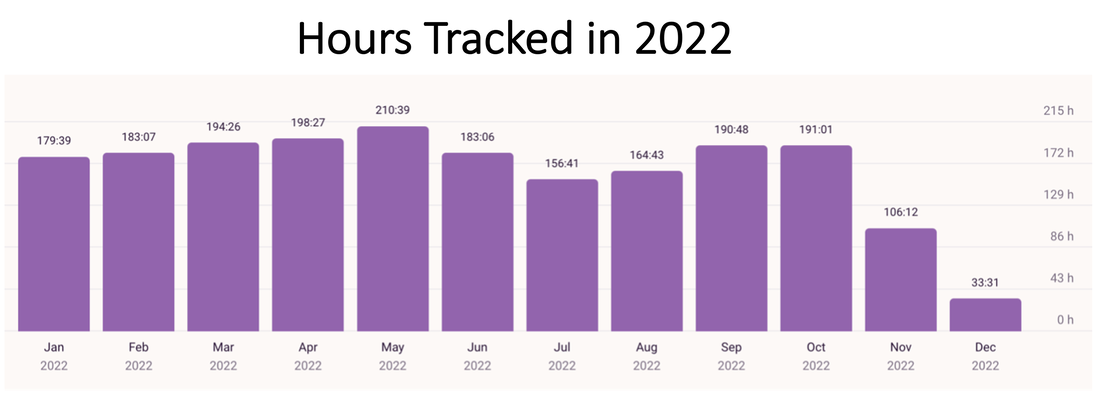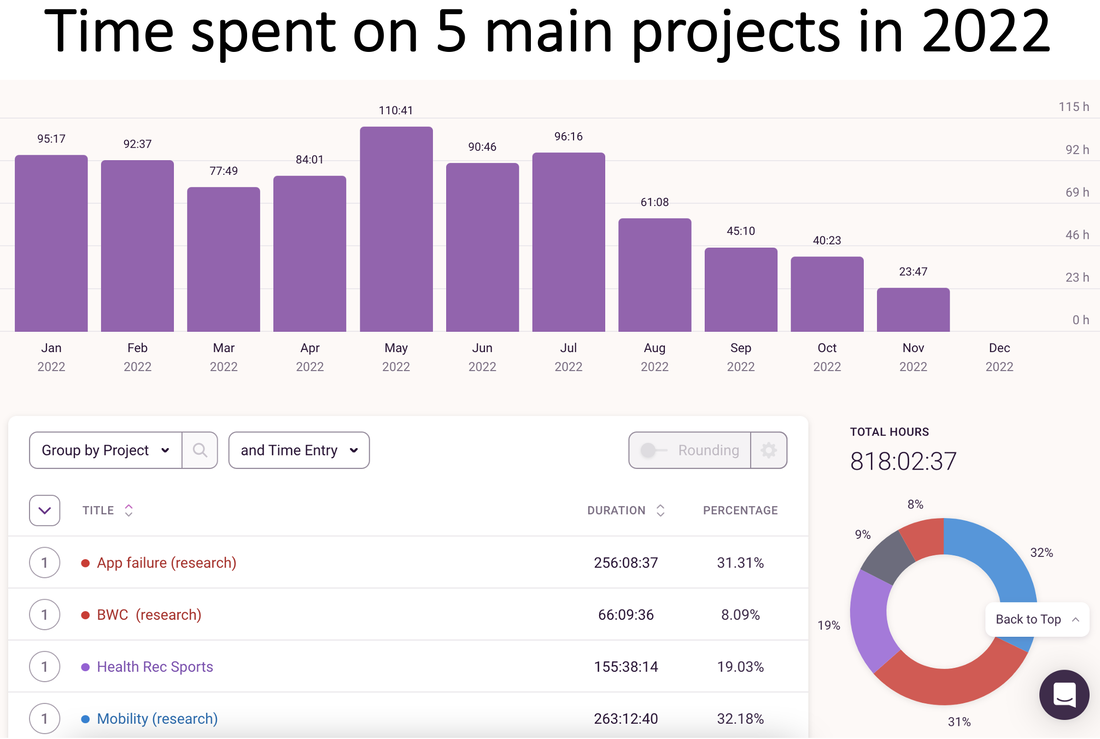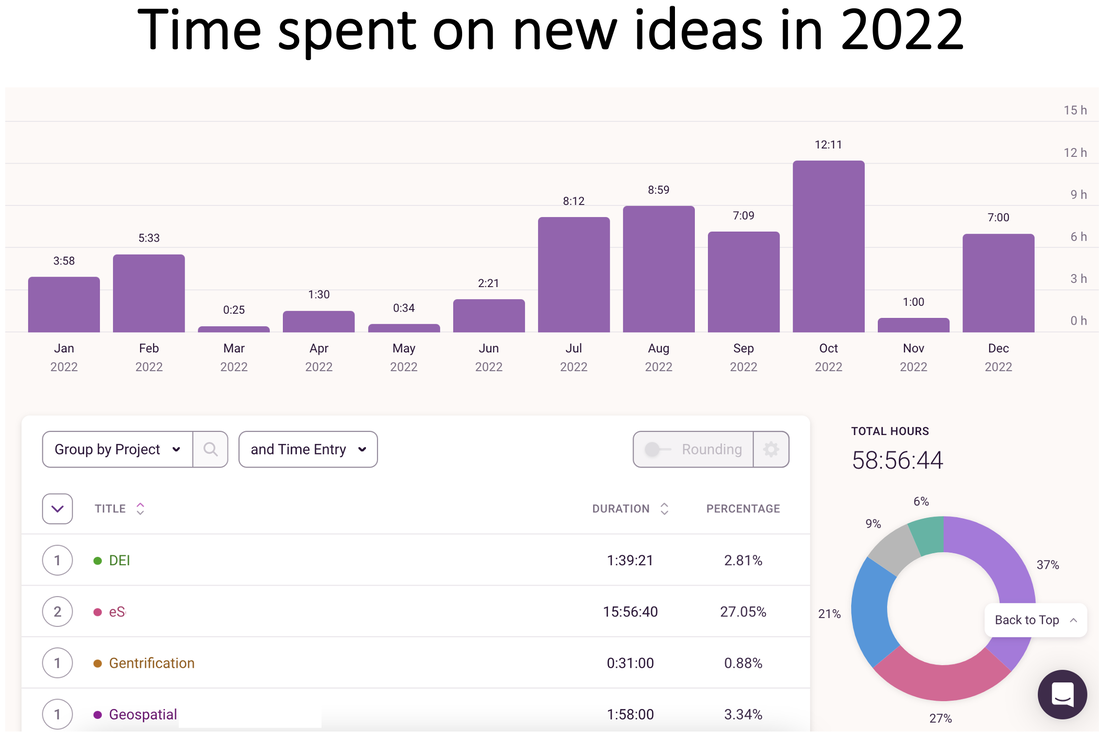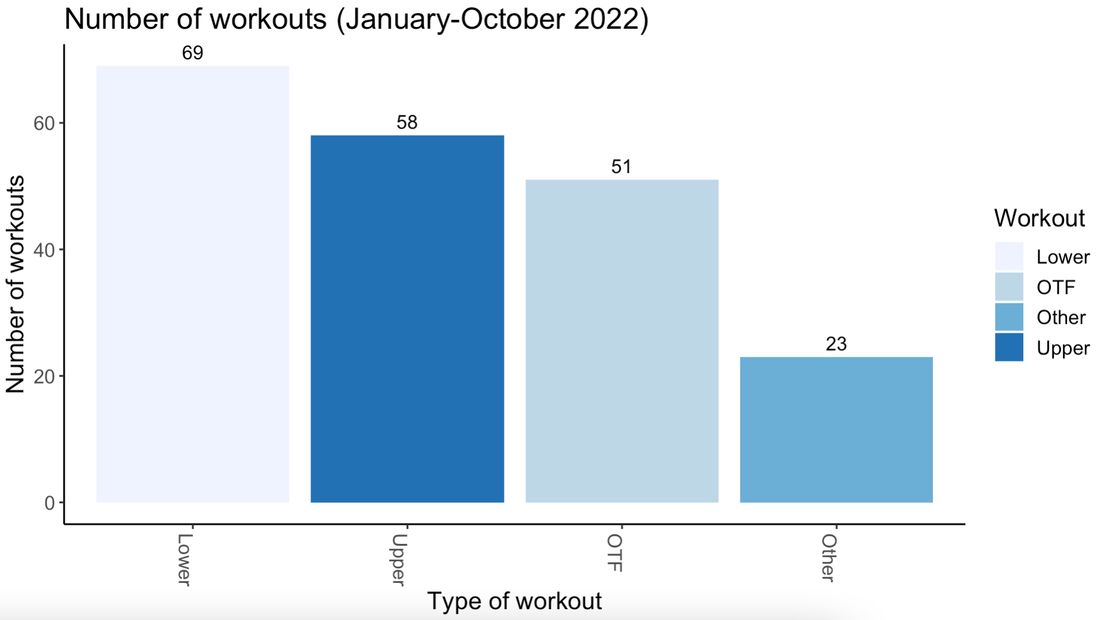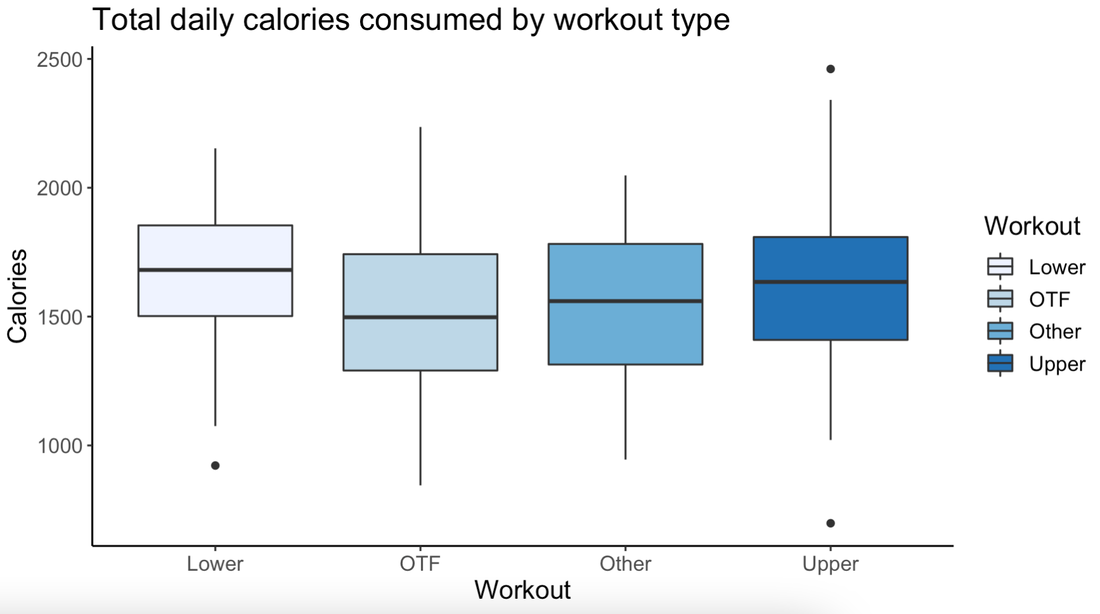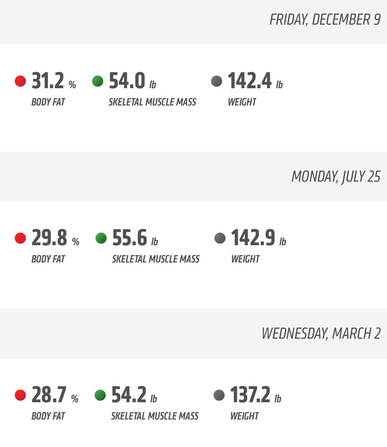|
Last year, I started tracking my data and wrote a blog post about it. I primarily track two types of data: Work (e.g., hours logged on research, teaching) and health (e.g., daily workouts, calories consumed, body measurements). 2021 stats: In 2021, I spent 932 hours working on my top 6 research projects. I completed over 250 hours of workouts and lost over 20 lbs with a 5% drop in body fat. It’s a bit soon to summarize 2022 and the December data aren’t in yet – but I wanted to take an early look at the year (minus December). 2022 stats: In 2022, so far, I spent 818 hours working on my top 5 projects with an additional 59 hours exploring 7-8 new ideas of which only 2 have continued and stuck with me. Killed 5 new project ideas this year! Taught at least twice as many classes as 2021. Of course, all this is based on the projects and hours I am able to track subject to some measurement error. Many "new ideas" never make it to this set. So these numbers should be interpreted as lower bounds. My key trends @ work:
My key trends with fitness: With fitness, my main goal this year was maintenance. I continued to keep the 20lbs I lost in 2021 off and maintained my 250 or so workouts with lots of long runs/cardio in the first half of the year and transitioning to mostly strength workouts in the second half. Overall – what a year it’s been! More details below for those who love to see the data as much as I do. (1) Expanding the pie: 30% more hours in 20222022 vs. 2021 data! Logged more hours in the summer this year compared with 2021. Thanks to Thanksgiving, the month of November in both years was pretty good for home/family time. (2) Exploitation-exploration trade-off Invested primarily in my 5 main projects in the early part of the year with over 60% time on just 2 of them. Both are now (re)submitted. Fingers crossed! Tried out new ideas and teams more in the second half of the year. I am pretty sure I didn't track my time on these ideas properly but spent about 59 hours as a lower bound: What's in a Number? |
DISCOVERExciting marketing research, cutting-edge methods, and highlights from marketing conferences Categories
All
Archives
May 2024
|

